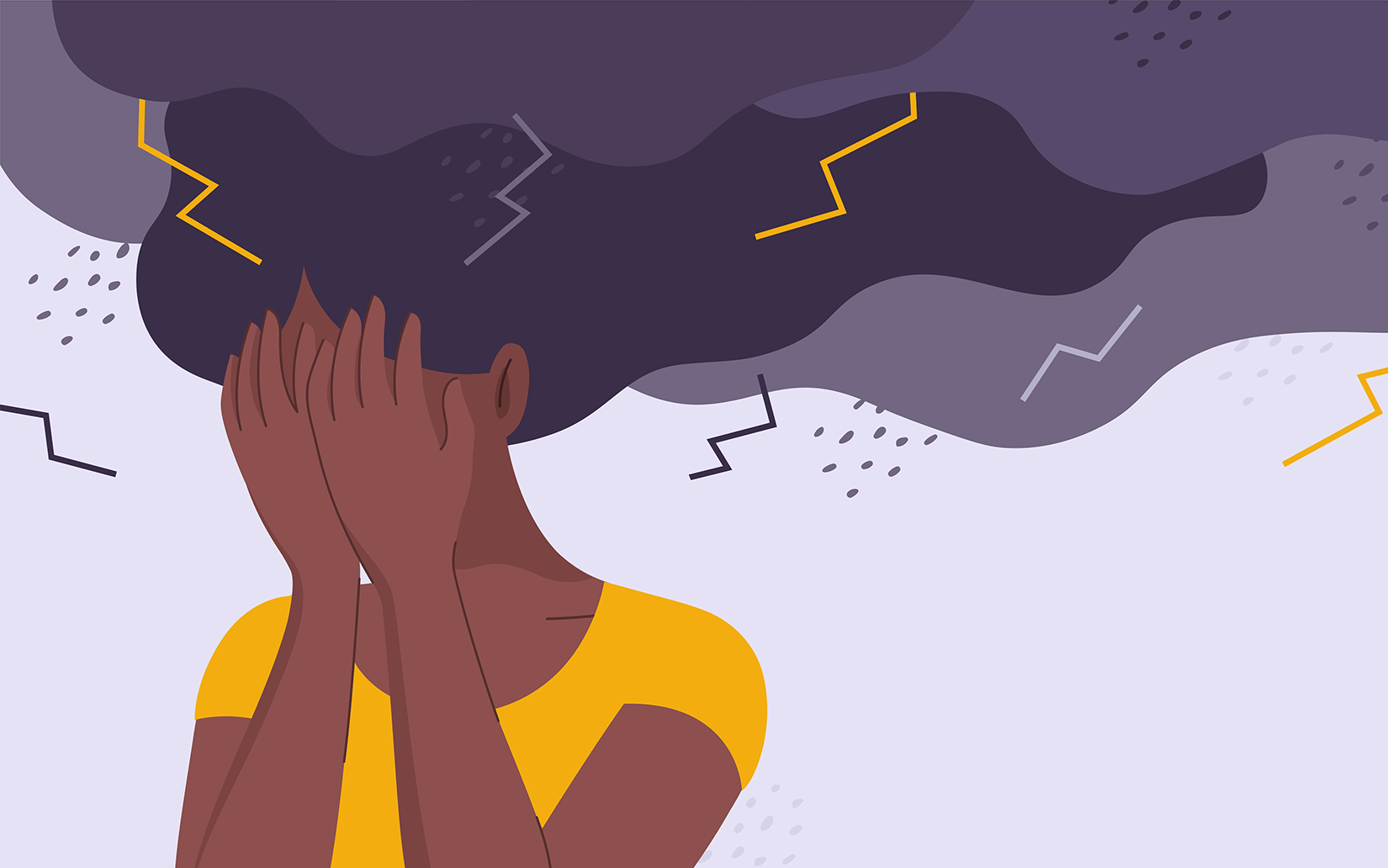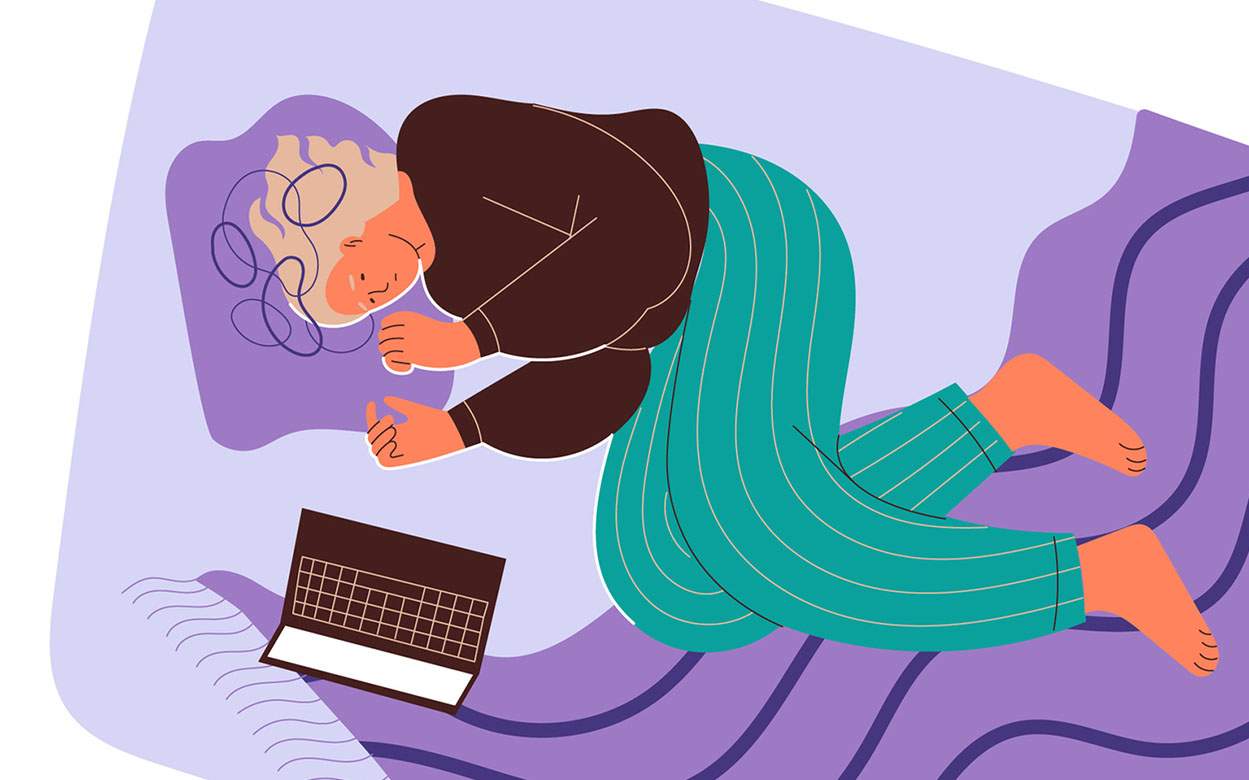Suicide prevention is an urgent and complex issue in mental health services. In the book Mindfulness and the Transformation of Despair: Working with People at Risk of Suicide, Mark Williams and his coauthors speak to fellow clinicians and researchers, acknowledging the crux of the condition: “Suicidal people are hardly ever certain that they want to die, but they certainly do not want to go on living in such pain…and our job is to help them find a way of living alongside the difficulties, making peace with despair, and giving them a chance to experience what it is like to come out on the other side of feeling so trapped.” Although Williams found evidence that mindfulness-based interventions may help those struggling with suicidal thoughts, to date, not many such programs exist.
A recent exception is The Suicide Prevention Through Mindfulness Training program, an eight-week pilot program held in St. John’s, Newfoundland. Conducted in May and June 2021, the program was offered by the Canadian Mental Health Association Newfoundland and Labrador (CMHA-NL) in partnership with Safer Mindfulness Inc. A follow-up support program for participants was also offered from late August to early October 2021. Mindfulness instructor and trainer Andrew Safer, author of Anxiety, Stress and Mindfulness, designed and led both programs, with input and support from a diverse team. Those steering the project development included a clinical psychologist, a social worker, a community support worker with ASIST (Applied Suicide Intervention Skills Training), and others. While the program didn’t include a formal research study, participants did answer evaluation questions during the first and last sessions, indicating positive results. For example, collectively, the participants rated the intensity of their suicidal thoughts as being more than 41% lower at the end of the program than their ratings at the beginning of the program.
You Don’t Have to Navigate This Moment Alone
Mindful talked with Andrew Safer, Founder of Safer Mindfulness Inc., about creating this program and teaching mindfulness skills to help people navigate suicidal thoughts without acting on them.
If you are experiencing suicidal thoughts, know that you don’t have to navigate this moment alone. Most importantly, and as difficult as it may be, talk to a medical professional or to someone you trust about how you’re feeling.
Andrew Safer also offers this simple mindfulness practice that can support you in shifting how you relate to thoughts. It may serve as an addition to any medication, therapy, or counseling you are receiving.
How Mindfulness Can Support Mental Health in Suicide Prevention
Mindful: How did this collaboration with the Canadian Mental Health Association Newfoundland and Labrador come together?
Andrew Safer: I presented to their board in 2016, and things developed organically from there. CMHA-NL received funding from the Department of Health and Community Services for running mindfulness training programs for people struggling with anxiety, depression, and addictions, which were delivered through this excellent collaboration.
We had a team from CMHA-NL including some who had helped with the Mindfulness for Depression training program that I led in 2020. We did some planning and included their input for the Suicide Prevention program. We discussed whether to include people who were suicidal in the same group with the people who were depressed, but not suicidal. Ultimately, we decided it would be better to work with the group at risk of suicide separately. Twenty-four people registered, and 13 (some of whom had been referred by psychiatrists and psychologists) attended the initial Suicide Prevention session. An average of 12 participants attended the sessions.
What did you research to prepare for creating the program?
I’m not an expert in helping people with suicidal thoughts specifically, although I do have some personal experience with suicidal thoughts dating back more than 30 years. I researched in Google Scholar, where I found there was evidence of benefit for this population. I actually did not find Mark Williams’ excellent book Mindfulness-Based Cognitive Therapy with People at Risk of Suicide until a week or two before the program started. So, although it wasn’t foundational in terms of the program’s design, it was still very helpful because our programs were, in fact, aligned in many ways. I took comfort in the fact that Williams had done this pioneering work, using strict research protocols. I hadn’t read anything by another mindfulness practitioner-teacher working in this field.
Considering the subject matter, clinicians might be intimidated at the thought of working with this population. But, once I saw the impact this approach can have, I found it hugely inspiring. As it turns out, mindfulness practice and techniques can be a really powerful method that people who are dealing with suicidal thoughts may benefit from, (along with regular support from mental health professionals).
What was your approach to mindfulness for this program?
There are different approaches to mindfulness meditation, such as breath awareness and mindfulness-awareness (more on that below), each having elements that are generally well suited to dealing with these types of mental health issues. Our foundational sitting practice includes the grounding elements of basic mindfulness practice—quite literally, placing attention on feet on the floor and seat in the chair. This is a gateway to grounding, and also to feeling connected to something bigger than oneself. That’s the beginning point.
Beyond that, we are orienting to the present moment, and working with the thought process: recognizing thoughts and returning to the present moment. In mindfulness-awareness, instead of maintaining an orientation to the body, we place the attention on the outbreath, so we’re welcoming a sense of openness or spaciousness. The habitual preoccupation with oneself—my problem, my anxiety, my story lines—gradually begins to give way to an awareness of “other.” One’s eyes are open during sitting practice. The fundamental practice of recognizing thoughts and coming back to the here and now, over and over again, provides an excellent method for developing a perspective on thoughts, and this can be very helpful for people with suicidal thoughts.
In addition, making friends with oneself is an integral part of the process. For many of us, a critical and judgmental voice is always running in the background of our experience. How much more so for people plagued with suicidal thoughts? With the teachings and practice of loving-kindness, they can begin to make inroads into self-kindness and appreciating themselves for who they are.
What were the outcomes? How do people tend to respond?
It takes some time. I think one aspect of how it helps is that mindfulness-awareness practice is tangibly giving them a break where they don’t have to worry about, do, or keep track of anything. I think people appreciate that.
In terms of the outcomes, in one-on-one interviews with participants after the program, the comments made tended to be very encouraging. Participants reported being able to face the different kinds of painful negative emotions they had been experiencing. Eight participants completed the evaluation at the last session. Compared to the first session, there was a 133% improvement in the ability to pause and interrupt the pattern of anxious thoughts! The intensity of suicidal thoughts was greatly reduced compared to the start of the program. Participants’ self-ratings indicated that the intensity of these thoughts was reduced by greater than 40%. Some reported that they felt better able to notice thoughts throughout the day with a sense of humor, or that using the breath was really helping them during the day. Finally, it was significant that at the end of the program, they related to the statement “I feel like I am alone in the world” over 64% less, compared to the start of the program. This may trace to a palpable sense of connection among the participants, and with the staff.
Participants indicated that they were significantly more confident in dealing with difficulties. One statement read: “When negative thoughts overwhelm me, I don’t have the tools to deal with it.” There was an 88.9% average improvement in the response. Another statement was: “I always have the feeling that there is something I should be doing to get rid of my troubling emotions.” There was a 63.6% average improvement. A statement that suggests increased ability to deal with suicidal thoughts was: “When I start thinking of something that concerns me, I can’t get it out of my mind.” There was a 58.3% average improvement.
Were there ways in which the program was trauma informed?
The way meditation practice is introduced to this population is important. It’s very likely that some of the participants will have experienced trauma. We can reasonably expect that some participants who are at risk of suicide may have PTSD, and the last thing we want to do is put them in a pressure-cooker situation where they feel obligated to sit there and suffer through their discomfort. We don’t want them to feel trapped. They need to know that they always have agency.
With this in mind, I kept the silent sitting periods short in the beginning. I’m talking throughout the instruction. Unless there is a reason to end it sooner, sitting in silence will last for about 5 minutes in the beginning. That time gradually expands through the program, while they’re getting used to it. Toward the end, we were sitting for 20 minutes, possibly a little longer. The important thing is that the participants know that they can shift their posture or get up at any time. If relating to the breath is creating difficulty, they can switch their attention to feeling their feet on the floor. They can also switch to walking meditation. I find that just knowing this relieves pressure, and this may be all that is needed. Or if someone just wants to get up and take a break from practicing, that’s totally fine. I suggest that, once they feel ready, they can rejoin the group if they feel inclined.
A community support worker with suicide-prevention training was on hand throughout the sessions, available to talk with anyone in the program.
This is a trauma-sensitive approach, on a basic level, that is, to my mind, in keeping with David Treleaven’s book Trauma-Sensitive Mindfulness. Giving people ways to self-regulate, I think, is the key.
A few months later, you held the follow-up program. Was this planned from the beginning, or did it develop later?
How the follow-up came about was through speaking with a CMHA-NL social worker, who was part of the team. She had been very supportive, and as the initial program was drawing to a close, we had a meeting where she asked about follow-up. I’m used to doing follow-up six months after my programs, but she was talking about the support that people with mental health struggles need, and should have. There was a big report in Newfoundland and Labrador about mental health needs, emphasizing the need for follow-up support.
So participants were invited to attend four one-hour sessions spread over eight weeks. The groups had anywhere between three and five people attending. It was less structured than the program sessions. In discussion pairs, participants spoke about topics like the role of mindfulness in everyday life. What the participants wanted was a chance to connect with the others, who they knew would understand what they were going through.
At the end of the follow-up, which was three and a half months after the initial program ended, the five participants who were in attendance indicated a 40% average reduction in intensity of suicidal thoughts compared to the average for participants at session one of the training. At the end of the program, there was a 41.7% reduction, suggesting that this key measure remained mostly the same over that period of time.
A community support worker observed the following at the follow-up sessions: “Several participants… commented that deep breathing, awareness practice, and pausing helped them to deal with difficult emotions. Others commented that they could stay in the present moment when focused on the breath. That they appreciated how Andrew provided a venue for them to learn to be kinder and less judgmental to themselves for past mistakes. Several expressed how thoughts of suicide decreased with learned skills, that meditation calmed down their busy thoughts that otherwise could lead to suicide.”
Are there any other thoughts you’d like to share about what you observed while leading this program?
Coping skills are so important, and I think mindfulness can provide some very powerful ones, particularly in relation to thoughts. The difference these practices can make when the individual is engaged throughout the process can be really striking. It’s the difference between believing they’re a terrible person and the world would be better without them, versus having the insight that these are thoughts, not to be taken as truth. Believing these thoughts are true could push a person in the direction of suicide.
I’m not meaning to simplify this. There are many different reasons that people die by suicide. There are also many avenues of support and care that they should have access to, including conventional therapies and medication where needed. I think mindfulness is another tool that clinicians can explore as one kind of support for their clients with suicidal thoughts. When people have all sorts of terrible, unbearable beliefs about themselves, it’s not hard to imagine the impact that could have at a vulnerable moment. If people are able to build a regular mindfulness practice that allows them to create some space in their mind, and make friends with themselves, that will definitely stand them in good stead going forward.
read more
A Mindfulness Practice to Meet Tough Emotions with Curiosity
Curiosity is a helpful tool for engaging with our embodied experience, including emotions like sadness, anxiety, or any other unpleasant emotion. Explore this simple exercise to help you shift your attitude toward what you’re feeling.
Read More
Take-What-You-Need Meditations to Support Kids, Teens, and Young Adults
Mindful partnered with WholeSchool Mindfulness to create a special collection of guided meditations designed to support young people in finding more calm, compassion, and joy in daily life.
Read More
Shift Your Mind From Crisis Mode to Calm
Unchecked stress may lead to overwhelm, unhelpful coping, and burnout. When you learn to recognize the warning signs, you can take wise action to manage your stress—with a little kind attention, and a lot of self-compassion.
Read More









